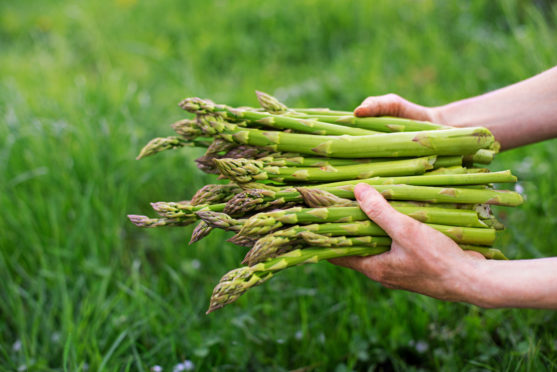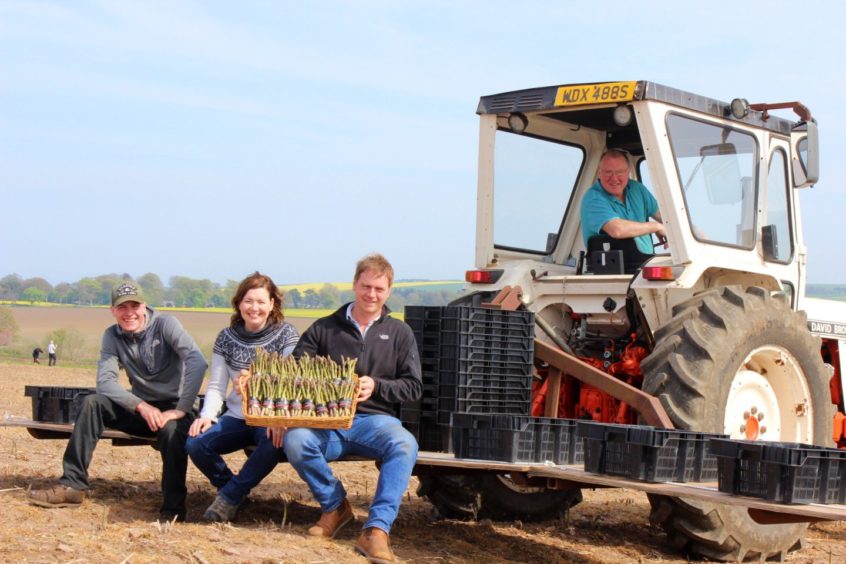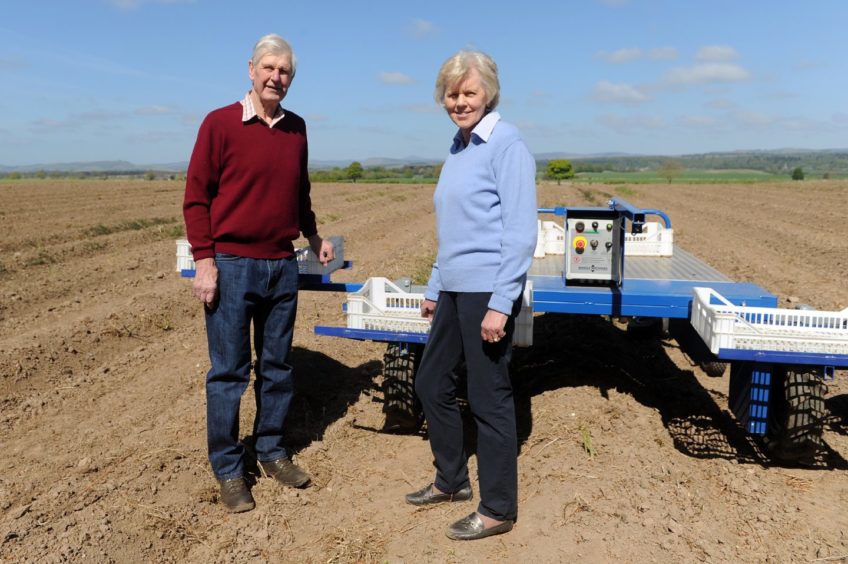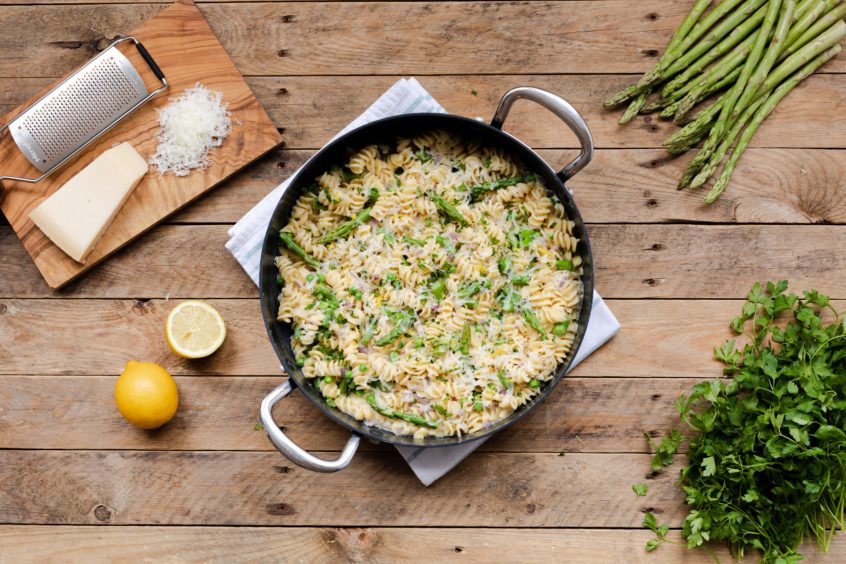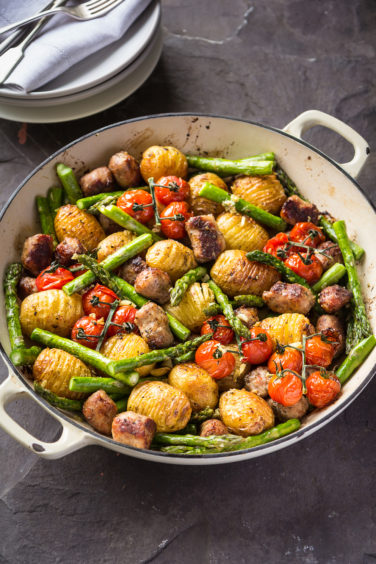It’s no secret that asparagus season is one of the food industry’s most talked about, with some of the best being grown right here on our doorsteps in Scotland.
Asparagus is typically grown in six to eight weeks, depending on how cold it is, from the end of April until June with each spear being harvested by hand, with some even managing to reach heights of 10cm in one day.
The health benefits of asparagus are insurmountable as eating the ingredient helps to, among other things, promote healthy bacteria in the large intestine which subsequently reduces bloating.
It’s also been known to boost the immune system, due to its high levels of vitamin C, and, according to britishasparagus.com is also a mild diuretic, meaning it can help to detoxify the body and cure hangovers. It also contains more folic acid than any other vegetable and is also a source of fibre, potassium and is an antioxidant.
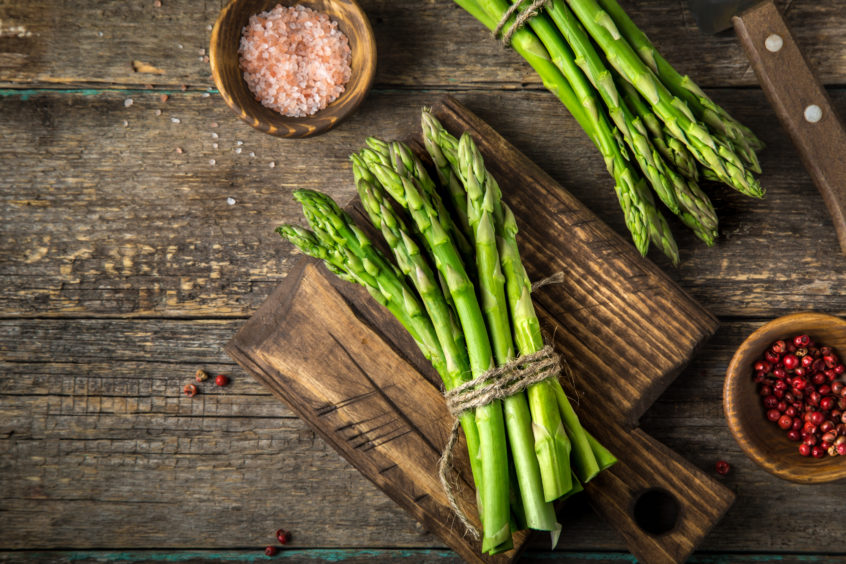
Whether you like yours boiled, barbecued, grilled, steamed, fried or roasted, it’s one of the best vegetables to eat at their freshest, preferably on the day they are bought or harvested.
If you are unable to eat it on the day it is harvested or bought, then there are ways to prolong the ingredient’s freshness. Why not try storing it in the fridge wrapped in a wet paper towel? Or, if fridge space allows, you can keep it fresh for up to two weeks by storing a bunch in a mug in two centimetres of water, according to the team at Lunan Bay Farm.
What do the producers say?
There are currently only two commerical asparagus growers in Scotland, Lunan Bay Farm and Eassie Farm, both of which are based in the rural county of Angus.
Jillian McEwan, who runs Lunan Bay Farm with her husband Neil, has been waxing lyrical about asparagus since they started growing more than 140,000 plants of it across 15 acres in 2016.
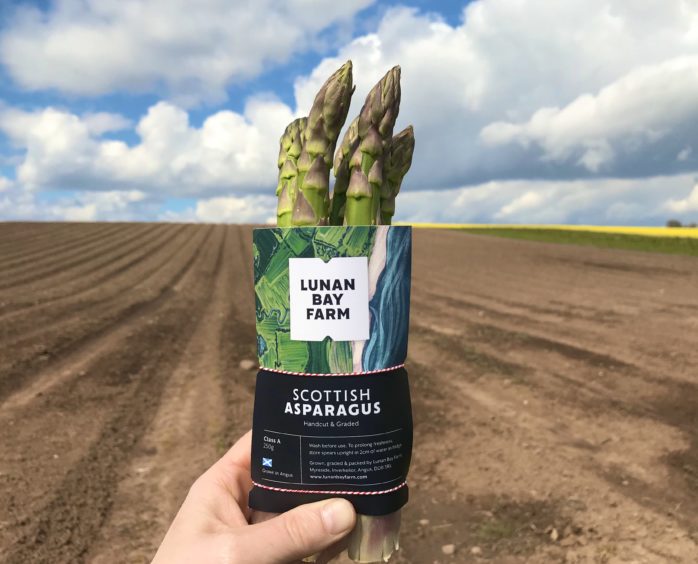 Jillian said: “We’re expecting a full harvest of the crop this year, but it’s been so dry so we’ve been having to irrigate the fields so the soil doesn’t dry out as there hasn’t been enough moisture.
Jillian said: “We’re expecting a full harvest of the crop this year, but it’s been so dry so we’ve been having to irrigate the fields so the soil doesn’t dry out as there hasn’t been enough moisture.
“We’re going to be out harvesting every day and just keep cutting the spears, as they can turn into ferns up to 2m high if left alone and means we lose the spears.
“It can take about six hours to harvest a whole field but by the time we’ve finished, they’ve started growing again back at the start.
“Officially we will stop cutting on June 21, so it’s important to be eating these highly nutrious vegetables over the next few weeks, while we can.”
Due to the vegetable’s versatility, there are lots of different ways it can be eaten, meaning it can also fit in with everyone’s appetite and an assortment of dietary requirements.
Jillian said: “When selecting spears, you’re really looking for them to be dark green in colour with a purple tinge at the top – almost as if they’re blushing. The top of the tip has to be closed really tightly together – that way you know they’re really fresh.
“I love the versatility of the vegetable. It’s similar to avocado in the sense that it can be eaten for breakfast, lunch and dinner.
“We tend to grill it or barbecue it with some Scottish rapeseed oil.
“Peel the bottoms of the stems with a vegetable peeler, drizzle some rapeseed oil over them, place under the grill or on the barbecue, turning often for five minutes, then remove, drizzle more oil over the top – one that’s more for eating than cooking – and sprinkle some cracked black pepper, lemon zest and sea salt over the top.
“Simplest is often the best and asparagus can also be eaten raw, which I don’t think a lot of people realise.”
Meanwhile, Sandy Patullo from Eassie Farm, started their cutting season at the end of April, with the aim of expecting the unexpected from the infamously-unpredictable Scottish weather.
“We’ve started cutting already but 40 days is our limit,” he said. “We then leave it to fern. The weather just now is quite typical and similar to 2019 in the sense that the fern grew well later in the season. But sticking to 40 days has always been the best way for us in the past.
“In terms of cooking it, we prefer to steam it with some butter, either on the barbecue or in the oven. Keep it simple”.
Creamy asparagus pasta
(Serves 4)
Ingredients
- 250g pasta shapes
- 1 bunch asparagus, washed and trimmed
- 150g frozen peas
- 1 tbsp olive oil
- 1 red onion, chopped
- 4 cloves garlic, crushed
- 1 tbsp plain flour
- 100ml vegetable stock
- 200 ml milk
- 75g cream cheese
- 3 tbsp Parmesan cheese
- Salt & pepper
- 2 tbsp chopped flat leaf parsley
Method
- Cook the pasta as per the instructions on the pack. In the last three minutes of cooking time, add the asparagus and peas to the pasta pot. Cook until the pasta is al dente and the vegetables cooked, then drain.
- To make your sauce, heat the olive oil in a large pan over a medium heat. Cook the onion and garlic until soft, approximately five minutes.
- In a ramekin, combine the flour and stock and mix until smooth and then add to the onion mixture in the pan. Whisk in the milk and bring to a simmer. Stir in the cream cheese and Parmesan and season.
- Stir the pasta and vegetables into the hot sauce and serve with the chopped parsley sprinkled over and a little extra Parmesan.
Recipe courtesy of britishasparagus.com
One-pan sausage-meatball roast with asparagus and new potatoes
(Serves 4)
Ingredients
- 1kg small new potatoes
- 4 tbsp olive oil
- 1 tsp dried oregano
- 8 thick pork sausages
- 400g cherry vine tomatoes
- 2 cloves garlic, chopped
- 2 bunches British asparagus, trimmed and cut in half
- Salt and freshly ground black pepper
Method
- Preheat the oven to 180°C fan.
- Using a sharp knife, make a series of thin slices (about 2mm apart) all along the new potatoes, cutting down about three quarters of the way through so the potatoes stay intact at the base.
- Add the potatoes to a large roasting tin and drizzle over the olive oil, sprinkle on the oregano and season with salt and pepper. Toss about to evenly coat. Roast for 10 minutes.
- Cut each sausage into four, peeling away and discarding the skins as you go. Remove the potatoes from the oven, scatter around the sausage pieces and slide back into the oven for another 15 minutes.
- Remove the roasting tin from the oven once more, scatter over the tomatoes and the garlic and toss to coat, turning the potatoes so they are all cut side up. Slide back into the oven and roast for another 10 minutes.
- Finally, add the asparagus to the tin, tossing to coat and roast for five more minutes.
- Remove from the oven and serve straight away.
Recipe courtesy of britishasparagus.com
